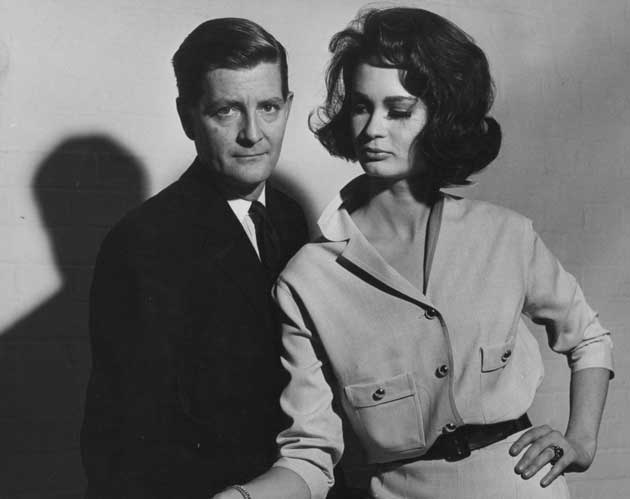Bob Schulz: Fashion designer who captured the spirit of the Swinging Sixties

Throughout the 1950s and 1960s, Bob Schulz was right at the cutting edge of British fashion. His superbly crafted haute couture dresses were much sought after, and one layout from the fashion pages of the Daily Express of the time shows one of his early creations juxtaposed with a gown by Christian Dior.
His ready-to-wear designs were all the rage in American stores, from Bloomingdale's and Bendel's in New York to Neiman Marcus of Dallas. In 1967, Women's Wear Daily described Schulz as looking like "a young Kirk Douglas – and his clothes look terribly right... typical of the new wave of London designers combining classic good tailoring with a young mood". In London, during the Swinging Sixties, Shulz's designs were ubiquitous, always wearable and feminine and refreshingly free of gimmickry. He enjoyed a huge success in the UK with Young Jaeger, the line he pioneered and ran from 1959 until 1965, when he accepted an irresistible offer from the Milan store La Rinascente and moved to Italy for several years.
Schulz's plan had been to return to London and resume his couture business, to live and work in a large house which he had acquired on a short lease in Wilton Place, Knightsbridge. But the building was virtually wrecked by a burst water-pipe on the fifth floor, which had been vandalised, and the insurers refused to compensate since the flooding had not been accidental. Schulz was never to know financial security again, although he continued to produce beautiful and original dresses and designs until two years ago, when he finally retired, at the age of 83. As recently as 1988, Tatler magazine described a wedding dress he made for Flora McEwen as "the loveliest dress seen at a London wedding for years".
One of three children, Robert Schulz was born on the edge of Australia's central desert, at Booleroo, north of Adelaide, in 1923. His parents separated when he was 13 and he remembered hearing King Edward VIII's abdication speech on a crackling radio sitting in his mother's car on the way to Adelaide, where she went on to open a fashion shop. A few years later, the war reached the Pacific and Bob Schulz joined the army. His precise drawing skills were put to good use mapping the coastline and drawing machine parts, before he was sent to Papua New Guinea on active service.
At the age of 21 he began training as a dressmaker on an army rehabilitation course. After working in a Melbourne fashion house for a few years he could cut, sew and design. Armed with these skills and little else, besides good looks and quiet charm, he travelled to London in 1948 .
The Mayfair couturier Charles Creed, whose wife, Patricia, was fashion editor of Vogue, was impressed by his portfolio of sketches and gave him a job at once. After a few years, Schulz found backing and premises in West Halkin Street, Knightsbridge, and floated like a feather from success to further success, propelled by his innate talent and skill. His clientele included many of London's chicest hostesses, yet he always enjoyed a challenge and made the occasional foray into theatrical costume, designing dresses for Kay Kendall in a 1954 production of Noël Coward's Blithe Spirit, for instance.
In 1966, he and nine other designers, such as John Bates, Maggi Shepherd and Burberry, were chosen by the Fashion House Group of London and sent on a trade offensive to New York. Incidentally, the British ambassadress to Washington, Katherine Freeman, was photographed wearing a Bob Schulz dress .
In the late Fifties, Bob had enjoyed the bohemian Soho clubs such as the Colony Room, whose proprietress, Muriel Belcher, was a friend. He also spent time at the French House. The cinema was something of a passion and his knowledge of the medium was encyclopaedic. There was hardly a Hollywood bit-part actor whose name was not known by him, and certainly not a designer. The Starlight cinema under the Mayfair hotel was a favourite destination and he loved the nostalgia of Busby Berkeley and Fred Astaire pictures, but no more than the contemporary work of Robert Altman.
In the late 1980s, he moved into a studio flat in a council block off the Fulham Road which he decorated with characteristic style, continuing to entertain his loyal friends and the occasional couture client. Eternally boyish, invariably dressed in a well-cut tweed jacket and jeans, a shock of sandy hair across his forehead, he totally accepted these reduced circumstances and never allowed the absence of money to quench his personal optimism or creativity.
He shared the last three decades of his life with his devoted friend Elio Marchesi, and together they travelled to India and the Far East repeatedly. Just 18 months ago they made a valedictory trip to Australia, and, of course, visited Booleroo.
Jonathan Hope
Robert Schulz, couturier: born Booleroo, South Australia 16 April 1923; died London 17 May 2008.
Join our commenting forum
Join thought-provoking conversations, follow other Independent readers and see their replies
Comments